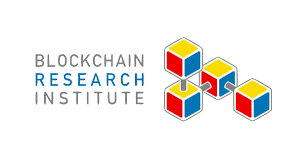CIO Priorities 2022
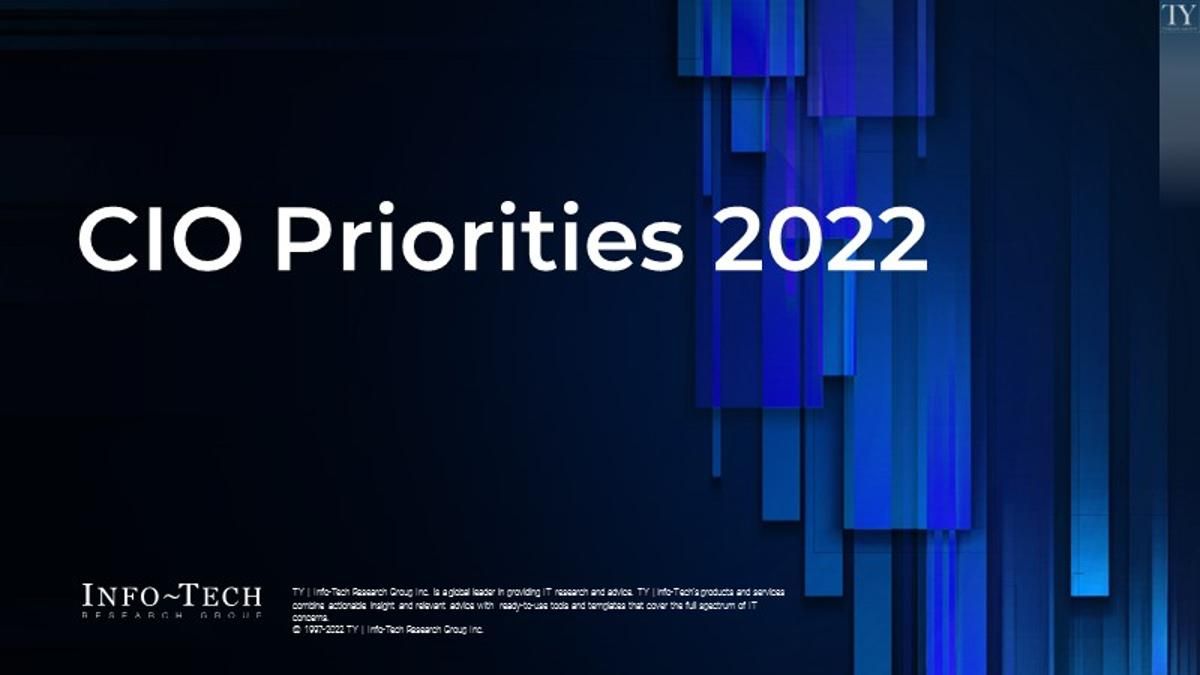
- Understand how to respond to trends affecting your organization.
- Determine your priorities based on current state and relevant internal factors.
- Assign the right amount of resources to accomplish your vision.
- Consider what new challenges outside of your control will demand a response.
Our Advice
Critical Insight
A priority is created when external factors hold strong synergy with internal goals and an organization responds by committing resources to either avert risk or seize opportunity. These are the priorities identified in the report:
- Reduce Friction in the Hybrid Operating Model
- Improve Your Ransomware Readiness
- Support an Employee-Centric Retention Strategy
- Design an Automation Platform
- Prepare to Report on New Environmental, Social, and Governance Metrics
Impact and Result
Update your strategic roadmap to include priorities that are critical and relevant for your organization based on a balance of external and internal factors.
CIO Priorities 2022 Research & Tools
Besides the small introduction, subscribers and consulting clients within this management domain have access to:
1. CIO Priorities 2022 – A report on the key priorities for competing in the digital economy.
Discover Info-Tech’s five priorities for CIOs in 2022.
- CIO Priorities Report for 2022
2. Listen to the podcast series
Hear directly from our contributing experts as they discuss their case studies with Brian Jackson.
- Frictionless hybrid working: How the Harvard Business School did it
- Close call with ransomware: A CIO recounts a near security nightmare
- How a financial services company dodged "The Great Resignation"
- How Allianz took a blockchain platform from pilot to 1 million transactions
- CVS Health chairman David Dorman on healthcare's hybrid future
Infographic
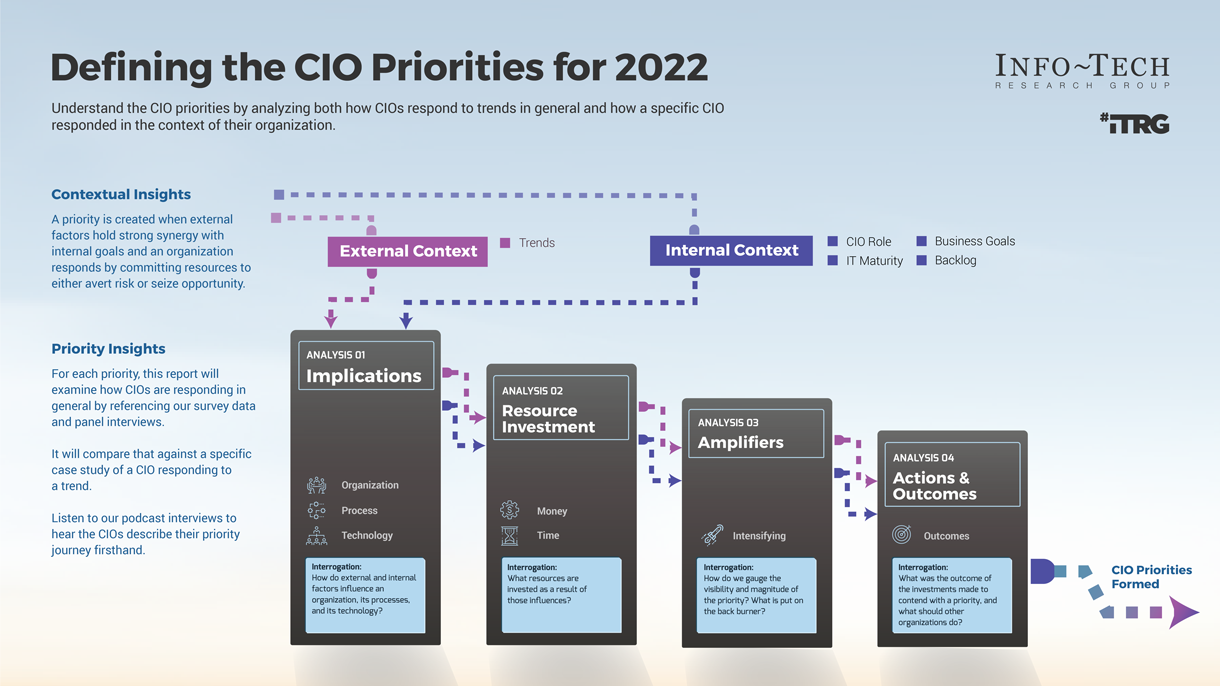
Further reading
CIO Priorities 2022
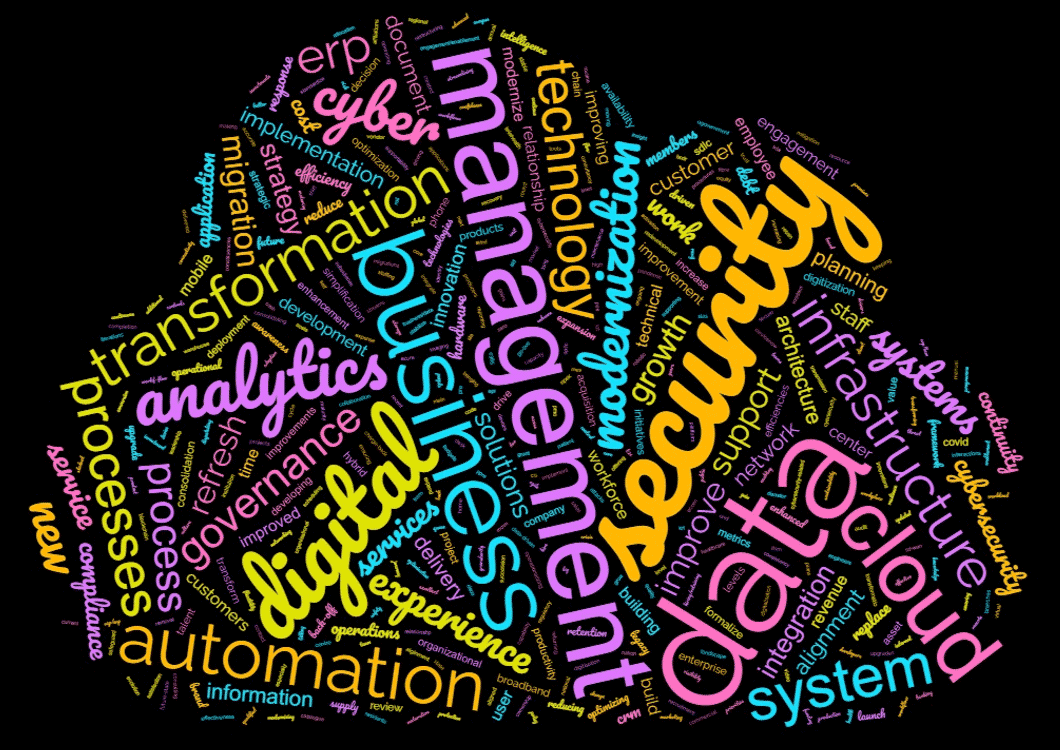
|
Info-Tech’s 2022 Tech Trends survey asked CIOs for their top three priorities. Cluster analysis of their open-ended responses shows four key themes:
|
Info-Tech’s annual CIO priorities are formed from proprietary primary data and consultation with our internal experts with CIO stature
2022 Tech Trends Survey CIO Demographic N=123
Info-Tech’s Tech Trends 2022 survey was conducted between August and September 2021 and collected a total of 475 responses from IT decision makers, 123 of which were at the C-level. Fourteen countries and 16 industries are represented in the survey.
2022 IT Talent Trends Survey CIO Demographic N=44
Info-Tech’s IT Talent Trends 2022 survey was conducted between September and October 2021 and collected a total of 245 responses from IT decision makers, 44 of which were at the C-level. A broad range of countries from around the world are represented in the survey.
Internal CIO Panels’ 125 Years Of Combined C-Level IT Experience
Panels of former CIOs at Info-Tech focused on interpreting tech trends data and relating it to client experiences. Panels were conducted between November 2021 and January 2022.
CEO-CIO Alignment Survey Benchmark Completed By 107 Different Organizations
Info-Tech’s CEO-CIO Alignment program helps CIOs align with their supervisors by asking the right questions to ensure that IT stays on the right path. It determines how IT can best support the business’ top priorities and address the gaps in your strategy. In 2021, the benchmark was formed by 107 different organizations.
IT Management & Governance Diagnostic Benchmark Completed By 320 Different Organizations
Info-Tech’s Management and Governance Diagnostic helps IT departments assess their strengths and weaknesses, prioritize their processes and build an improvement roadmap, and establish clear ownership of IT processes. In 2021, the benchmark was formed by data from 320 different organizations.
The CIO priorities are informed by Info-Tech’s trends research reports and surveys
Priority: “The fact or condition of being regarded or treated as more important than others.” (Lexico/Oxford)
Trend: “A general direction in which something is developing or changing.” (Lexico/Oxford)
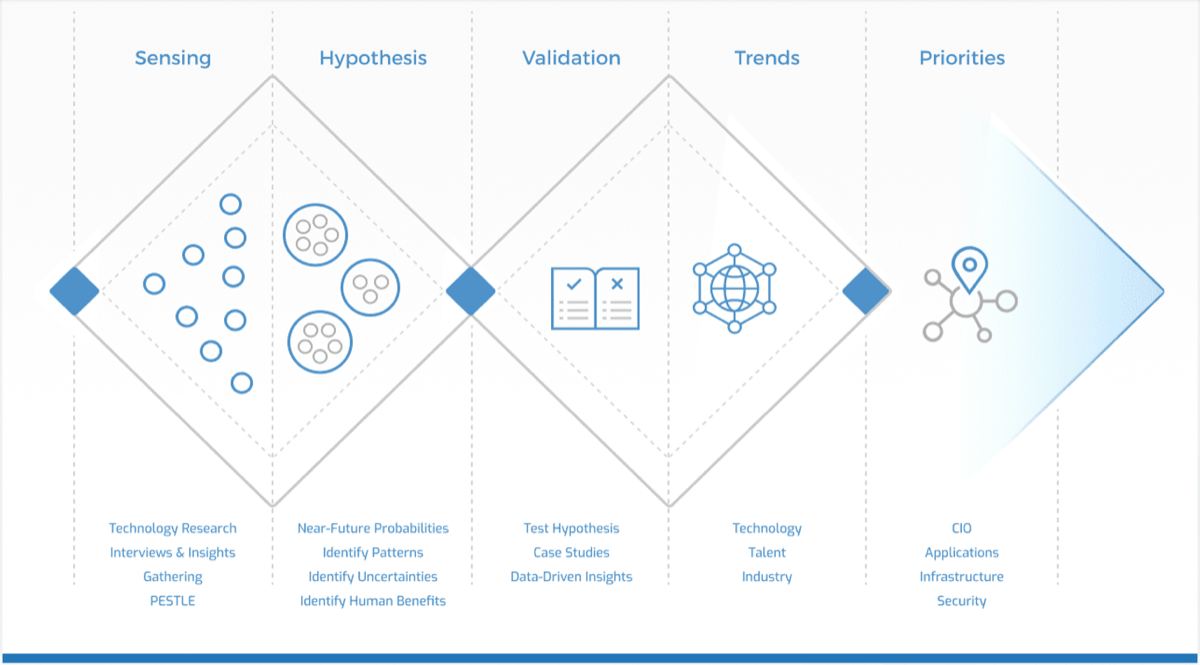
Visit Info-Tech’s Trends & Priorities Research Center
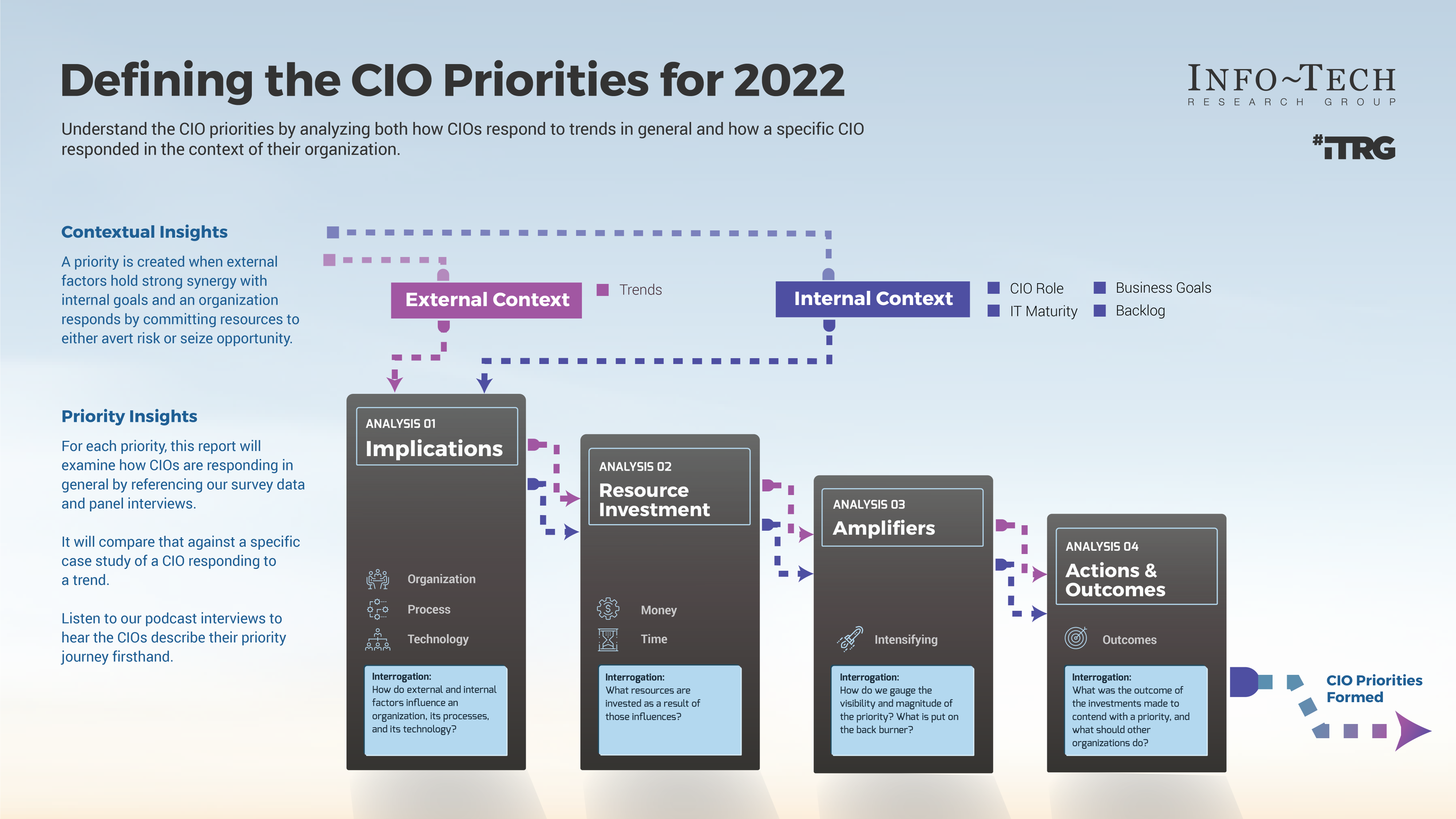
The Five Priorities
Priorities to compete in the digital economy
- Reduce Friction in the Hybrid Operating Model
- Improve Your Ransomware Readiness
- Support an Employee-Centric Retention Strategy
- Design an Automation Platform
- Prepare to Report on New Environmental, Social, and Governance Metrics
Reduce friction in the hybrid operating model
Priority 01 | APO07 Human Resources Management
Deliver solutions that create equity between remote workers and office workers and make collaboration a joy.
Hybrid work is here to stay
CIOs must deal with new pain points related to friction of collaboration
In 2020, CIOs adapted to the pandemic’s disruption to offices by investing in capabilities to enable remote work. With restrictions on gathering in offices, even digital laggards had to shift to an all-remote work model for non-essential workers.
Most popular technologies already invested in to facilitate better collaboration
- 24% Web Conferencing
- 23% Instant Messaging
- 20% Document Collaboration
In 2022, the focus shifts to solving problems created by the new hybrid operating model where some employees are in the office and some are working remotely. Without the ease of collaborating in a central hub, technology can play a role in reducing friction in several areas:
- Foster more connections between employees. Remote workers are less likely to collaborate with people outside of their department and less likely to spontaneously collaborate with their peers. CIOs should provide a digital employee experience that fosters collaboration habits and keeps workers engaged.
- Prevent employee attrition. With more workers reevaluating their careers and leaving their jobs, CIOs can help employees feel connected to the overall purpose of the organization. Finding a way to maintain culture in the new context will require new solutions. While conference room technology can be a bane to IT departments, making hybrid meetings effortless to facilitate will be more important.
- Provide new standards for mediated collaboration. Meeting isn’t as easy as simply gathering around the same table anymore. CIOs need to provide structure around how hybrid meetings are conducted to create equity between all participants. Business continuity processes must also consider potential outages for collaboration services so employees can continue the work despite a major outage.
Three in four organizations have a “hybrid” approach to work. (Tech Trends 2022 Survey)
In most organizations, a hybrid model is being implemented. Only 14.9% of organizations are planning for almost everyone to return to the office, and only 9.9% for almost everyone to work remotely.
Elizabeth ClarkCIO, Harvard Business School"I want to create experiences that are sticky. That keep people coming back and engaging with their colleagues." |

|
Listen to the Tech Insights podcast:
Frictionless hybrid working: How the Harvard Business School did it
Internal interpretation: Harvard Business School
-
March 2020
The pandemic disrupts in-class education at Harvard Business School. Their case study method of instruction that depends on in-person, high-quality student engagement is at risk. While students and faculty completed the winter semester remotely, the Dean and administration make the goal to restore the integrity of the classroom experience with equity for both remote and in-person students. -
May 2020
A cross-functional task force of about 100 people work intensively, conducting seven formal experiments, 80 smaller tests, and hundreds of polling data points, and a technology and facilities solution is designed: two 4K video cameras capturing both the faculty and the in-class students, new ceiling mics, three 85-inch TV screens, and students joining the videoconference from their laptops. A custom Zoom room, combining three separate rooms, integrated all the elements in one place and integrated with the lecture capture system and learning management system. -
October 2020
Sixteen classrooms are renovated to install the new solution. Students return to the classroom but in lower numbers due to limits on in-room capacity, but students rotate between the in-person and remote experience. -
September 2021
Renovations for the hybrid solution are complete in 26 classrooms and HBS has determined this will be its standard model for the classroom. The case method of teaching is kept alive and faculty and students are thrilled with the results. -
November 2021
HBS is adapting its solution for the classroom to its conference rooms and has built out eight different rooms for a hybrid experience. The 4K cameras and TV screens capture all participants in high fidelity as well as the blackboard.
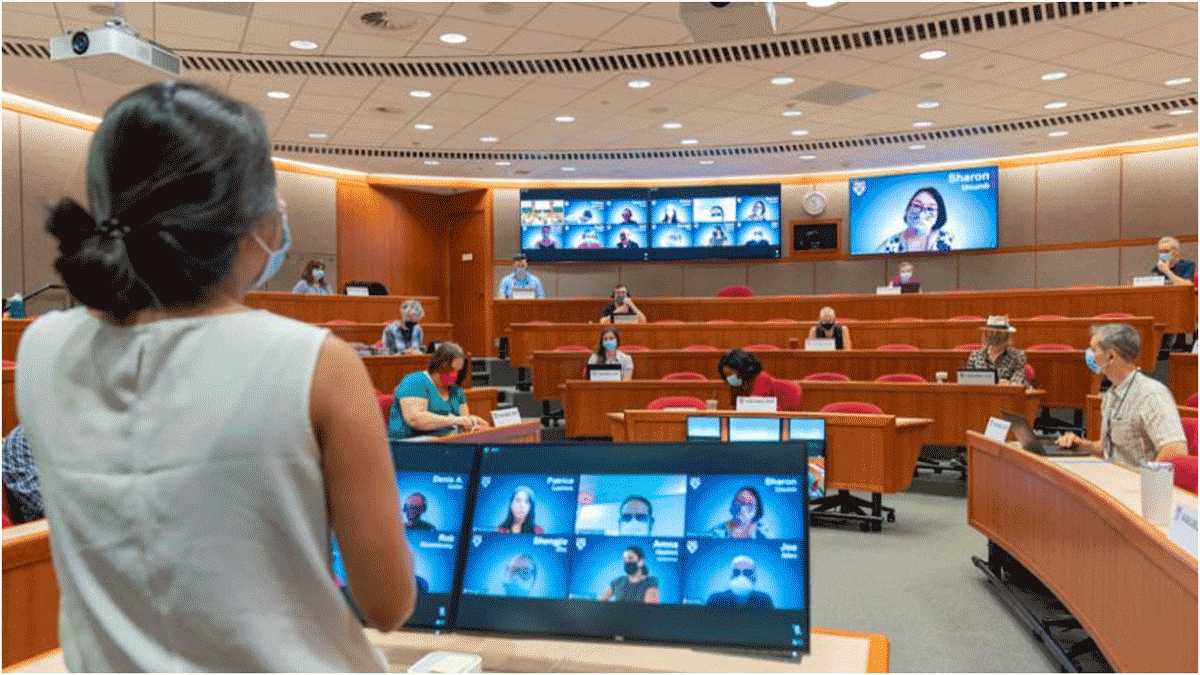
The renovated classrooms integrate all students, whether they are participating remotely or in person. (Image courtesy of Harvard Business School.)
Implications: Organization, Process, Technology
External
- Organization – About half of IT practitioners in the Tech Trends 2022 survey feel that IT leaders, infrastructure and operations teams, and security teams were “very busy” in 2021. Capacity to adapt to hybrid work could be constrained by these factors.
- Process – Organizations that want employees to benefit from being back in the office will have to rethink how workers can get more value out of in-person meetings that also require videoconference participation with remote workers.
- Technology – Fifty-four percent of surveyed IT practitioners say the pandemic raised IT spending compared to the projections they made in 2020. Much of that investment went into adapting to a remote work environment.
Internal
- Organization – HBS added 30 people to its IT staff on term appointments to develop and implement its hybrid classroom solutions. Hires included instructional designers, support technicians, coordinators, and project managers.
- Process – Only 25 students out of the full capacity of 95 could be in the classroom due to COVID-19 regulations. On-campus students rotated through the classroom seats. An app was created to post last-minute seat availability to keep the class full.
- Technology – A Zoom room was created that combines three rooms to provide the full classroom experience: a view of the instructor, a clear view of each student that enlarges when they are speaking, and a view of the blackboard.
Resources Applied
Appetite for Technology
CIOs and their direct supervisors both ranked internal collaboration tools as being a “critical need to adopt” in 2021, according to Info-Tech’s CEO-CIO Alignment Benchmark Report.
Intent to Invest
Ninety-seven percent of IT practitioners plan to invest in technology to facilitate better collaboration between employees in the office and outside the office by the end of 2022, according to Info-Tech’s 2022 Tech Trends survey.
“We got so many nice compliments, which you don’t get in IT all the time. You get all the complaints, but it’s a rare case when people are enthusiastic about something that was delivered.” (Elizabeth Clark, CIO, Harvard Business School)
Harvard Business School
- IT staff were reassigned from other projects to prioritize building a hybrid classroom solution. A cloud migration and other portfolio projects were put on pause.
- The annual capital A/V investment was doubled. The amount of spend on conference rooms was tripled.
- Employees were hired to the media services team at a time when other areas of the organization were frozen.
Outcomes at Harvard Business School
The new normal at Harvard Business School
New normal: HBS has found its new default operating model for the classroom and is extending its solution to its operating environment.
Improved CX: The high-quality experience for students has helped avoid attrition despite the challenges of the pandemic.
Engaged employees: The IT team is also engaged and feels connected to the mission of the school.
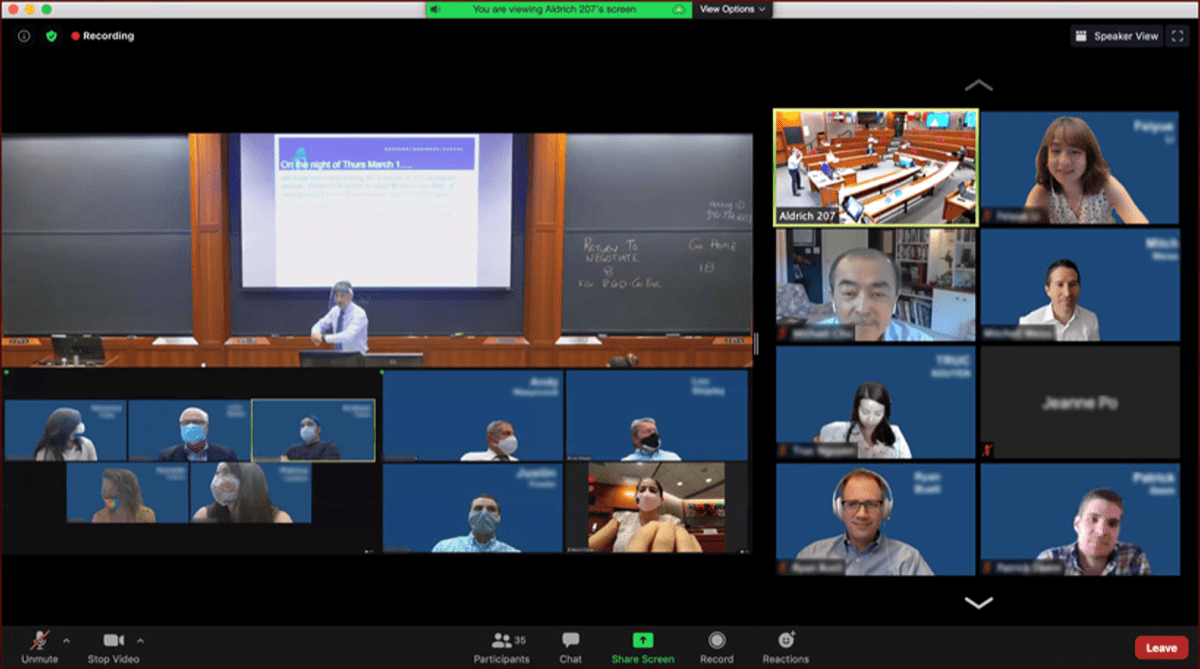
A custom Zoom room brings together multiple different views of the classroom into one single experience for remote students. (Image courtesy of Harvard Business School.)
From Priorities to Action
Make hybrid collaboration a joy
Align with your organization’s goals for collaboration and customer interaction, with the target of high satisfaction for both customers and employees. Invest in capital projects to improve the fidelity of conference rooms, develop and test a new way of working, and increase IT capacity to alleviate pressure points.
Foster both asynchronous and synchronous collaboration approaches to avoid calendars filling up with videoconference meetings to get things done and to accommodate workers contributing from across different time zones.
“We’ll always have hybrid now. It’s opened people’s eyes and now we’re thinking about the future state. What new markets could we explore?” (Elizabeth Clark, CIO, Harvard Business School)
Take the next step
Run Better Meetings
Hybrid, virtual, or in person – set meeting best practices that support your desired meeting norms.
Prepare People Leaders for the Hybrid Work Environment
Set hybrid work up for success by providing people leaders with the tools they need to lead within the new model.
Hoteling and Hot-Desking: A Primer
What you need to know regarding facilities, IT infrastructure, maintenance, security, and vendor solutions for desk hoteling and hot-desking.
“Human Resources Management” gap between importance and effectiveness
Info-Tech Research Group Management and Governance Diagnostic Benchmark 2021

Improve your ransomware readiness
Priority 02 | APO13 Security Strategy
Mitigate the damage of successful ransomware intrusions and make recovery as painless as possible.
The ransomware crisis threatens every organization
Prevention alone won’t be enough against the forces behind ransomware.
Cybersecurity is always top of mind for CIOs but tends to be deprioritized due to other demands related to digital transformation or due to cost pressures. That’s the case when we examine our data for this report.
Cybersecurity ranked as the fourth-most important priority by CIOs in Info-Tech’s 2022 Tech Trends survey, behind business process improvement, digital transformation, and modernization. Popular ways to prepare for a successful attack include creating offline backups, purchasing insurance, and deploying new solutions to eradicate ransomware.
CIOs and their direct supervisors ranked “Manage IT-Related Security” as the third-most important top IT priority on Info-Tech’s CEO-CIO Alignment Benchmark for 2021, in support of business goals to manage risk, comply with external regulation, and ensure service continuity.
Most popular ways for organizations to prepare for the event of a successful ransomware attack:
- 25% Created offline backups
- 18% Purchased cyberinsurance
- 19% New tech to eradicate ransomware
Whatever priority an organization places on cybersecurity, when ransomware strikes, it quickly becomes a red alert scenario that disrupts normal operations and requires all hands on deck to respond. Sophisticated attacks executed at wide scale demonstrate that security can be bypassed without creating an alert. After that’s accomplished, the perpetrators build their leverage by exfiltrating data and encrypting critical systems.
CIOs can plan to mitigate ransomware attacks in several constructive ways:
- Business impact analysis. Determine the costs of an outage for specific periods and the system and data recovery points in time.
- Engage a partner for 24/7 monitoring. Gain real-time awareness of your critical systems.
- Review your identity access management (IAM) policies. Use of multi-factor authentication and limiting access to only the roles that need it reduces ransomware risk.
50% of all organizations spent time and money specifically to prevent ransomware in the past year. (Info-Tech Tech Trends 2022 Survey)
John DoeCIO, mid-sized manufacturing firm in the US"I want to create experiences that are sticky. That keep people coming back and engaging with their colleagues." |  |
Listen to the Tech Insights podcast:
Close call with ransomware: a CIO recounts a near security nightmare
Internal interpretation: US-based, mid-sized manufacturing firm
May 1, 2021
A mid-sized manufacturing firm (“The Firm”) CIO gets a call from his head of security about odd things happening on the network. A call is made to Microsoft for support. Later that night, the report is that an unwanted crypto-mining application is the culprit. But a couple of hours later, that assessment is proven wrong when it’s realized that hundreds of systems are staged for a ransomware attack. All the attacker has to do is push the button.May 2, 2021
The Firm disconnects all its global sites to cut off new pathways for the malware to infect. All normal operations cease for 24 hours. It launches its cybersecurity insurance process. The CIO engages a new security vendor, CrowdStrike, to help respond. Employees begin working from home if they can so they can make use of their own internet service. The Firm has cut off its public internet connectivity and is severed from cloud services such as Azure storage and collaboration software.May 4, 2021
The hackers behind the attack are revealed by security forensics experts. A state-sponsored agency in Russia set up the ransomware and left it ready to execute. It sold the staged attack to a cybercriminal group, Doppel Spider. According to CrowdStrike, the group uses malware to run “big game hunting operations” and targets 18 different countries including the US and multiple industries, including manufacturing.May 10, 2021
The Firm has totally recovered from the ransomware incident and avoided any serious breach or paying a ransom. The CIO worked more hours than at any other point in his career, logging an estimated 130 hours over the two weeks.November 2021
The Firm never previously considered itself a ransomware target but has now reevaluated that stance. It has hired a service provider to run a security operations center on a 24/7 basis. It's implemented a more sophisticated detection and response model and implemented multi-factor authentication. It’s doubled its security spend in 2021 and will invest more in 2022.
“Now we take the approach that if someone does get in, we're going to find them out.” (John Doe, CIO, “The Firm”)
Implications: Organization, Process, Technology
External
- Organization – Organizations must consider how their employees play a role in preventing ransomware and plan for training to recognize phishing and other common traps. They must make plans for employees to continue their work if systems are disrupted by ransomware.
- Process – Backup processes across multiple systems should be harmonized to have both recent and common points to recover from. Work with the understanding IT will have to take systems offline if ransomware is discovered and there is no time to ask for permission.
- Technology – Organizations can benefit from security services provided by a forensics-focused vendor. Putting cybersecurity insurance in place not only provides financial protection but also guidance in what to do and which vendors to work with to prevent and recover from ransomware.
Internal
- Organization – The Firm was prepared with a business continuity plan to allow many of its employees to work remotely, which was necessary because the office network was incapacitated for ten days during recovery.
- Process – Executives didn’t seek to assign blame for the security incident but took it as a signal there were some new costs involved to stay in business. It initiated new outsource relationships and hired one more full-time employee to shore up security resources.
- Technology – New ransomware eradication software was deployed to 2,000 computers. Scripted processes automated much of the work, but in some cases full system rebuilds were required. Backup systems were disconnected from the network as soon as the malware was discovered.
Resources Applied
Consider the Alternative
Organizations should consider how much a ransomware attack on critical systems would cost them if they were down for a minimum of 24-48 hours. Plan to invest an amount at least equal to the costs of that downtime.
Ask for ID
Implementing across-the-board multi-factor authentication reduces chances of infection and is cheap, with enterprise solutions ranging from $2 to $5 per user on average. Be strict and deny access when connections don’t authenticate.
“You'll never stop everything from getting into the network. You can still focus on stopping the bad actors, but then if they do make it in, make sure they don't get far.” (John Doe, CIO, “The Firm”)
“The Firm” (Mid-Sized Manufacturer)
- During the crisis, The Firm paused all activities and focused solely on isolating and eliminating the ransomware threat.
- New outsourcing relationship with a vendor provides a 24/7 Security Operations Center.
- One more full-time employee on the security team.
- Doubled investment in security in 2021 and will spend more in 2022.
Outcomes at “The Firm” (Mid-Sized Manufacturer)
The new cost of doing business
Real-time security: While The Firm is still investing in prevention-based security, it is also developing its real-time detection and response capabilities. When ransomware makes it through the cracks, it wants to know as soon as possible and stop it.
Leadership commitment: The C-suite is taking the experience as a wake-up call that more investment is required in today’s threat landscape. The Firm rates security more highly as an overall organizational goal, not just something for IT to worry about.

The Firm now uses multi-factor authentication as part of its employee sign-on process. For employees, authenticating is commonly achieved by using a mobile app that receives a secret code from the issuer.
From Priorities to Action
Cybersecurity is everyone’s responsibility
In Info-Tech’s CEO-CIO Alignment Benchmark for 2021, the business goal of “Manage Risk” was the single biggest point of disagreement between CIOs and their direct supervisors. CIOs rank it as the second-most important business goal, while CEOs rank it as sixth-most important.
Organizations should align on managing risk as a top priority given the severity of the ransomware threat. The threat actors and nature of the attacks are such that top leadership must prepare for when ransomware hits. This includes halting operations quickly to contain damage, engaging third-party security forensics experts, and coordinating with government regulators.
Cybersecurity strategies may be challenged to be effective without creating some friction for users. Organizations should look beyond multi-layer prevention strategies and lean toward quick detection and response, spending evenly across prevention, detection, and response solutions.
Take the next step
Create a Ransomware Incident Response Plan
Don’t be the next headline. Determine your current readiness, response plan, and projects to close gaps.
Simplify Identity and Access Management
Select and implement IAM and produce vendor RFPs that will contain the capabilities you need, including multi-factor authentication.
Cybersecurity Series Featuring Sandy Silk
More from Info-Tech’s Senior Workshop Director Sandy Silk in this video series created while she was still at Harvard University.
Gap between CIOs and CEOs in points allocated to “Manage risk” as a top business goal

Support an employee-centric retention strategy
Priority 03 | ITRG02 Leadership, Culture & Values
Avoid being a victim of “The Great Resignation” by putting employees at the center of an experience that will engage them with clear career path development, purposeful work, and transparent feedback.
Defining an employee-first culture that improves retention
The Great resignation isn’t good for firms
In 2021, many workers decided to leave their jobs. Working contexts were disrupted by the pandemic and that saw non-essential workers sent home to work, while essential workers were asked to continue to come into work despite the risks of COVID-19. These disruptions may have contributed to many workers reevaluating their professional goals and weighing their values differently. At the same time, 2021 saw a surging economy and many new job opportunities to create a talent-hungry market. Many workers could have been motivated to take a new opportunity to increase their salary or receive other benefits such as more flexibility.
Annual turnover rate for all us employees on the rise
- 20% – Jan.-Aug. 2020, Dipped from 22% in 2019
- 25% Jan.-Aug. 2021, New record high Data from Visier Inc.
When you can’t pay them, develop them
IT may be less affected than other departments by this trend. Info-Tech’s 2022 IT Talent Trends Report shows that on average, estimated turnover rate in IT is lower than the rest of the organization. Almost half of respondents estimated their organization’s voluntary turnover rate was 10% or higher. Only 30% of respondents estimate that IT’s voluntary turnover rate is in the same range. However, CIOs working in industries with the highest turnover rates will have to work to keep their workers engaged and satisfied, as IT skills are easily transferred to other industries.
49% ranked “enabling learning & development within IT” as high priority, more than any other single challenge. (IT Talent Trends 2022 Survey, N=227)
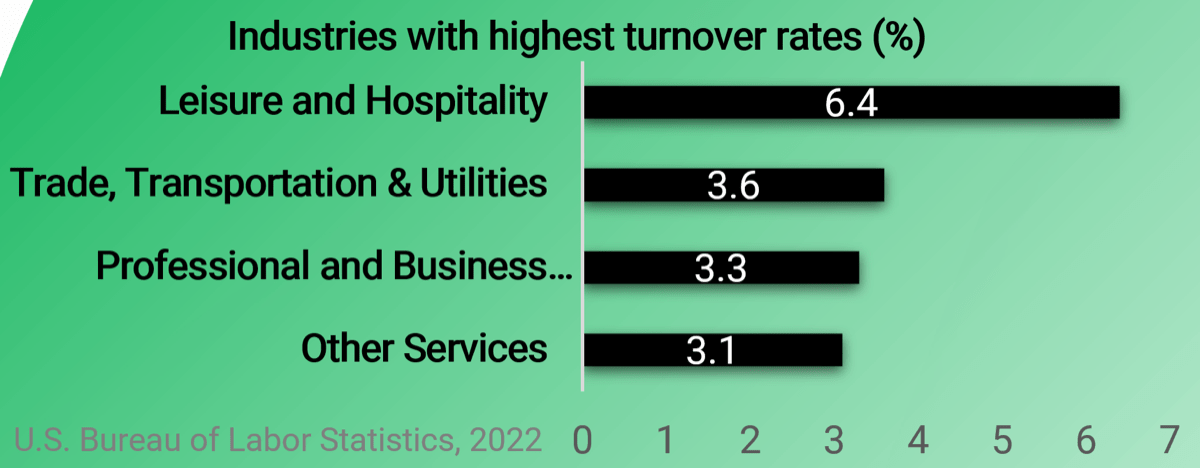
Jeff PreviteExecutive Vice-President of IT, CrossCountry Mortgage“We have to get to know the individual at a personal level … Not just talking about the business, but getting to know the person." |

|
Listen to the Tech Insights podcast:
How a financial services company dodged ‘The Great Resignation’
Internal interpretation: CrossCountry Mortgage
-
May 2019
Jeff Previte joins Cleveland, Ohio-based CrossCountry Mortgage in the CIO role. The company faces a challenge with employee turnover, particularly in IT. The firm is a sales-focused organization and saw its turnover rate reach as high as 60%. Yet Previte recognized that IT had some meaningful goals to achieve and would need to attract – and retain – some higher caliber talent. His first objective in his new role was to meet with IT employees and business leadership to set priorities. -
July 2019
Previte takes a “people-first” approach to leadership and meets his staff face-to-face to understand their personal situations. He sets to work on defining roles and responsibilities in the organization, spending about a fifth of his time on defining the strategy. -
June 2020
Previte assigned his leadership team to McLean & Company’s Design an Impactful Employee Development Program. From there, the team developed a Salesforce tool called the Career Development Workbook. “We had some very passionate developers and admins that wanted to build a home-grown tool,” he says. It turns McLean & Company’s process into a digital tool employees can use to reflect on their careers and explore their next steps. It helps facilitate development conversations with managers. -
January 2021
CrossCountry Mortgage changes its approach to career development activities. Going to external conferences and training courses is reduced to just 30% of that effort. The rest is by doing hands-on work at the company. Previte aligned with his executives and road-mapped IT projects annually. Based on employee’s interests, opportunities are found to carve out time from usual day-to-day activities to spend time on a project in a new area. When there’s a business need, someone internally can be ready to transition roles. -
June 2021
In the two years since joining the company, Previte has reduced the turnover rate to just 12%. The IT department has grown to more adequately meet the needs of the business and employees are engaged with more opportunities to develop their careers. Instead of focusing on compensation, Previte focused more on engaging employees with a developmentally dedicated environment and continuous hands-on learning.
“It’s come down to a culture shift. Folks have an idea of where we’re headed as an organization, where we’re headed as an IT team, and how their role contributes to that.” (Jeff Previte, EVP of IT, CrossCountry Mortgage)
Implications: Organization, Process, Technology
External
- Organization – A high priority is being placed on improving IT’s maturity through its talent. Enabling learning and development in IT, enabling departmental innovation, and recruiting are the top three highest priorities according to IT Talent Trends 2022 survey responses.
- Process – Recruiting is more challenging for industries that operate primarily onsite, according to McLean & Company's 2022 HR Trends Report. They face more challenges attracting applications, more rejected offers, and more candidate ghosting compared to remote-capable industries.
- Technology – Providing a great employee experience through digital tools is more important as many organizations see a mix of workers in the office and at home. These tools can help connect colleagues, foster professional development, and improve the candidate experience.
Internal
- Organization – CrossCountry Mortgage faced a situation where IT employees did not have clarity on their roles and responsibilities. In terms of salary, it wasn’t offering at the high end compared to other employers in Cleveland.
- Process – To foster a culture of growth and development, CrossCountry Mortgage put in place a performance assessment system that encouraged reflection and goal setting, aided by collaboration with a manager.
- Technology – The high turnover rate was limiting CrossCountry Mortgage from achieving the level of maturity it needed to support the company’s goals. It ingrained its new PA process with a custom build of a Salesforce tool.
Resources Applied
Show me the money
Almost six in ten Talent Trends survey respondents identified salary and compensation as the reason that employees resigned in the past year. Organizations looking to engage employees must first pay a fair salary according to market and industry conditions.
Build me up
Professional development and opportunity for innovative work are the next two most common reasons for resignations. Organizations must ensure they create enough capacity to allow workers time to spend on development.
“Building our own solution created an element of engagement. There was a sense of ownership that the team had in thinking through this.” (Jeff Previte, CrossCountry Mortgage)
CrossCountry Mortgage
- Executive time: CIO spends 10-20% of his time on activities related to designing the approach.
- Leveraged memberships with Info-Tech Research Group and McLean & Company to define professional development process.
- Internal IT develops automated workflow in Salesforce.
- Hired additional IT staff to build out overall capacity and create time for development activities.
Outcomes at CrossCountry Mortgage
Engaged IT workforce
The Great Maturation: IT staff turnover rate dropped to 10-12% and IT talent is developing on the job to improve the department’s overall skill level. More IT staff on hand and more engaged workers mean IT can deliver higher maturity level results.
Alignment achieved: Connecting IT’s initiatives to the vision of the C-suite creates a clear purpose for IT in its initiatives. Staff understand what they need to achieve to progress their careers and can grow while they work.

Employees from CrossCountry Mortgage headquarters assist with a drive-thru distribution event for the Cleveland Food Bank on Dec. 17, 2021. (Image courtesy of CrossCountry Mortgage.)
From Priorities to Action
Staff retention is a leadership priority
The Great Resignation trend is bringing attention to employee engagement and staff retention. IT departments are busier than ever during the pandemic as they work overtime to keep up with a remote workforce and new security threats. At the same time, IT talent is among the most coveted on the market.
CIOs need to develop a people-first approach to improve the employee experience. Beyond compensation, IT workers need clarity in terms of their career paths, a direct connection between their work and the goals of the organization, and time set aside for professional development.
Info-Tech’s 2021 benchmark for “Leadership, Culture & Values” shows that most organizations rate this capability very highly (9) but see room to improve on their effectiveness (6.9).
Take the next step
IT Talent Trends 2022
See how IT talent trends are shifting through the pandemic and understand how themes like The Great Resignation has impacted IT.
McLean & Company’s Modernize Performance Management
Customize the building blocks of performance management to best fit organizational needs to impact individual and organizational performance, productivity, and engagement.
Redesign Your IT Organizational Structure
Define future-state work units, roles, and responsibilities that will enable the IT organization to complete the work that needs to be done.
“Leadership, Culture & Values” gap between importance and effectiveness
Info-Tech Research Group Management and Governance Diagnostic Benchmark 2021

Design an automation platform
Priority 04 | APO04 Innovation
Position yourself to buy or build a platform that will enable new automation opportunities through seamless integration.
Build it or buy it, but platform integration can yield great benefits
Necessity is the mother of innovation
When it’s said that digital transformation accelerated during the pandemic, what’s really meant is that processes that were formerly done manually became automated through software. In responses to the Tech Trends survey, CIOs say digital transformation was more of a focus during the pandemic, and eight in ten CIOs also say they shifted more than 20% of their organization’s processes to digital during the pandemic. Automating tasks through software can be called digitalization.
Most organizations became more digitalized during the pandemic. But how they pursued it depends on their IT maturity. For digital laggards, partnering with a technology services platform is the path of least resistance. For sophisticated innovators, they can consider building a platform to address the specific needs of their business process. Doing so requires the foundation of an existing “digital factory” or innovation arm where new technologies can be tested, proofs of concept developed, and external partnerships formed. Patience is key with these efforts, as not every investment will yield immediate returns and some will fail outright.
Build it or buy it, platform participants integrate with their existing systems through application programming interfaces (APIs). Organizations should determine their platform strategies based on maturity, then look to integrate the business processes that will yield the most gains.
What role should you play in the platform ecosystem?

68% of CIOs say digital transformation became much more of a focus for their organization during the pandemic (Info-Tech Tech Trends 2022 Survey)
Bob CrozierChief Architect, Allianz Technology & Global Head of Blockchain, Allianz Technology SE"Smart contracts are really just workflows between counterparties." |

|
Listen to the Tech Insights podcast:
How Allianz took a blockchain platform from pilot to 1 million transactions
Internal interpretation: Allianz Technology
-
2015
After smart contracts are demonstrated on the Ethereum blockchain, Allianz and other insurers recognize the business value. There is potential to use the capability to administer a complex, multi-party contract where the presence of the reinsurer in the risk transfer ecosystem is required. Manual contracts could be turned into code and automated. Allianz organized an early proof of concept around a theoretical pandemic excessive loss contract. -
2018
Allianz Chief Architect Bob Crozier is leading the Global Blockchain Center of Competence for Allianz. They educate Allianz on the value of blockchain for business. They also partner with a joint venture between the Technology University of Munich and the state of Bavaria. A cohort of Masters students is looking for real business problems to solve with open-source distributed ledger technology. Allianz puts its problem statement in front of the group. A student team presents a proof of concept for an international motor insurance claims settlement and it comes in second place at a pitch day competition. -
2019
Allianz brings the concept back in-house, and its business leaders return to the concept. Startup Luther Systems is engaged to build a minimum-viable product for the solution, with the goal being a pilot involving three or four subsidiaries in different countries. The Blockchain Center begins communicating with 25 Allianz subsidiaries that will eventually deploy the platform. -
2020
Allianz is in build mode on its international motor insurance claims platform. It leverages its internal Dev/SecOps teams based in Munich and in India. -
May 2021
Allianz goes live with its new platform on May 17, decommissioning its old system and migrating all live claims data onto the new blockchain platform. It sees 400 concurrent users go live across Europe. -
January 2022
Allianz mines its one-millionth block to its ledger on Jan. 19, with each block representing a peer-to-peer transaction across its 25 subsidiaries in different countries. The platform has settled hundreds of millions of dollars.

Implications: Organization, Process, Technology
External
- Organization – To explore emerging technologies like blockchain, organizations need staff that are accountable for innovation and have leeway to develop proofs of concept. External partners are often required to bring in fresh ideas and move quickly towards an MVP.
- Process – According to the Tech Trends 2022 survey, 84% of CIOs consider automation a high-value digital capability, and 77% say identity verification is a high-value capability. A blockchain platform using smart contracts can deliver those.
- Technology – The Linux Foundation’s Hyperledger Fabric is an open-source blockchain technology that’s become popular in the financial industry for its method of forming consensus and its modular architecture. It’s been adopted by USAA, MasterCard, and PayPal. It also underpins the IBM Blockchain Platform and is supported by Azure Blockchain.
Internal
- Organization – Allianz is a holding company that owns Allianz Technology and 25 operating entities across Europe. It uses the technology arm to innovate on the business process and creates shared platforms that its entities can integrate with to automate across the value chain.
- Process – Initial interest in smart contracts on blockchain were funneled into a student competition, where a proof of concept was developed. Allianz partnered with a startup to develop an MVP, then developed the platform while aligning with its business units ahead of launch.
- Technology – Allianz built its blockchain platform on Hyperledger Fabric because it was a permissioned system, unlike other public permissionless blockchains such as Ethereum, and because its mining mechanism was much more energy efficient compared to other blockchains using Proof of Work consensus models.
Resources Applied
Time to innovate
Exploring emerging technology for potential use cases is difficult for staff tasked with running day-to-day operations. Organizations serious about innovation create a separate team that can focus on “moonshot” projects and connect with external partners.
Long-term ROI
Automation of new business processes often requires a high upfront initial investment for a long-term efficiency gain. A proof of concept should demonstrate clear business value that can be repeated often and for a long period.
“My next project has to deliver in the tens of millions of value in return. The bar is high and that’s what it should be for a business of our size.” (Bob Crozier, Allianz)
Allianz
- Several operating entities from different countries supplied subject matter expertise and helped with the testing process.
- Allianz Technology team has eight staff members. It is augmented by Luther Systems and the team at industry group B3i.
- Funding of less than $5 million to develop. Dev team continues to add improvements.
- Operating requires just one full-time employee plus infrastructure costs, mostly for public cloud hosting.
Outcomes at Allianz
From insurer to platform provider
Deliver your own SaaS: Allianz Technology built its blockchain-based claims settlement platform and its subsidiaries consume it as software as a service. The platform runs on a distributed architecture across Europe, with each node running the same version of the software. Operating entities can also integrate their own systems to the platform via APIs and further automate business processes such as billing.
Ready to scale: After processing one million transactions, the international claims settlement platform is proven and ready to add more participants. Crozier sees auto repair shops and auto manufacturers as the next logical users.

Allianz is a shareholder of the Blockchain Insurance Industry Initiative (B3i). It is providing a platform used by a group of insurance companies in the commercial and reinsurance space.
When should we use blockchain? THREE key criteria:
- Redundant processes
Different entities follow the same process to achieve the desired outcome. - Audit trail
Accountability in the decision making must be documented. - Reconciliation
Parties need to be able to resolve disputes by tracing back to the truth.
From Priorities to Action
It’s a build vs. buy question for platforms
Allianz was able to build a platform for its group of European subsidiaries because of its established digital factory and commitment to innovation. Allianz Technology is at the “innovate” level of IT maturity, allowing it to create a platform that subsidiaries can integrate with via APIs. For firms that are lower on the IT maturity scale, buying a platform solution is the better path to automation. These firms will be concerned with integrating their legacy systems to platforms that can reduce the friction of their operating environments and introduce modern new capabilities.
From Info-Tech’s Build a Winning Business Process Automation Playbook
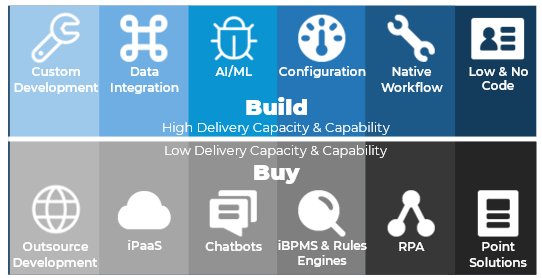
Take the next step
Accelerate Your Automation Processes
Integrate automation solutions and take the first steps to building an automation suite.
Build Effective Enterprise Integration on the Back of Business Process
From the backend to the frontlines – let enterprise integration help your business processes fly.
Evolve Your Business Through Innovation
Innovation teams are tasked with the responsibility of ensuring that their organizations are in the best position to succeed while the world is in a period of turmoil, chaos, and uncertainty.
“Innovation” gap between importance and effectiveness Info-Tech Research Group Management and Governance Diagnostic Benchmark 2021

Prepare to report on new environmental, social, and governance (ESG) metrics
Priority 05 | ITRG06 Business Intelligence and Reporting
Be ready to either lead or support initiatives to meet the criteria of new ESG reporting mandates and work toward disclosure reporting solutions.
Time to get serious about ESG
What does CSR or ESG mean to a CIO?
Humans are putting increasing pressure on the planet’s natural environment and creating catastrophic risks as a result. Efforts to mitigate these risks have been underway for the past 30 years, but in the decade ahead regulators are likely to impose more strict requirements that will be linked to the financial value of an organization. Various voluntary frameworks exist for reporting on environmental, social, and governance (ESG) or corporate social responsibility (CSR) metrics. But now there are efforts underway to unify and clarify those standards.
The most advanced effort toward a global set of standards is in the environmental area. At the United Nations’ COP26 summit in Scotland last November, the International Sustainability Standards Board (ISSB) announced its headquarters (Frankfurt) and three other international office locations (Montreal, San Francisco, and London) and its roadmap for public consultations. It is working with an array of voluntary standards groups toward a consensus.
In Info-Tech’s 2022 Tech Trends survey, two-thirds of CIOs say their organization is committed to reducing greenhouse gas emissions, yet only 40% say their organizational leadership is very concerned with reducing those emissions. CIOs will need to consider how to align organizational concern with internal commitments and new regulatory pressures. They may investigate new real-time reporting solutions that could serve as a competitive differentiator on ESG.
Standards informing the ISSB’s global set of climate standards

67% of CIOs say their organization is committed to reducing greenhouse gases, with one-third saying that commitment is public. (Info-Tech Tech Trends 2022 Survey)
40% of CIOs say their organizational leadership is very concerned with reducing greenhouse gas emissions.
David W. DormanChairman of the board, CVS Health“ESG is a question of what you do in the microcosm of your company to make sure there is a clear, level playing field – that there is a color-blind, gender-blind meritocracy available – that you are aware that not in every case can you achieve that without really focusing on it. It’s not going to happen on its own. That’s why our commitments have real dollars behind them and real focus behind them because we want to be the very best at doing them.” |

|
Listen to the Tech Insights podcast:
CVS Health chairman David Dorman on healthcare's hybrid future
Internal interpretation: CVS Health
CVS Health established a new steering committee of senior leaders in 2020 to oversee ESG commitments. It designs its corporate social responsibility strategy, Transform Health 2030, by aligning company activities in four key areas: healthy people, healthy business, healthy planet, and healthy community. The strategy aligns with the United Nations’ Sustainable Development Goals. In alignment with these goals, CVS identifies material topics where the company has the most ability to make an impact. In 2020, its top three topics were:
- Access to quality health care
- Patient and customer safety
- Data protection and privacy
Material TopicAccess to quality health care |
Material TopicPatient and customer safety |
Material TopicData protection and privacy |
Technology InitiativeMinuteClinic’s Virtual Collaboration for NursesCVS provided Apple iPads compliant with the Health Insurance Portability and Accountability Act (HIPAA) to clinics in a phased approach, providing training to more than 700 providers in 26 states by February 2021. Nurses could use the iPads to attend virtual morning huddles and access clinical education. Nurses could connect virtually with other healthcare experts to collaborate on delivering patient care in real-time. The project was able to scale across the country through a $50,000 American Nurses Credentialing Center Pathway Award. (Wolters Kluwer Health, Inc.) |
Technology InitiativeMinuteClinic’s E-ClinicMinuteClinics launched this telehealth solution in response to the pandemic, rolling it out in three weeks. The solution complemented video visits delivered in partnership with the Teladoc platform. Visits cost $59 and are covered by Aetna insurance plans, a subsidiary of CVS Health. It hosted more than 20,000 E-Clinic visits through the end of 2020. CVS connected its HealthHUBs to the solution to increase capacity in place of walk-in appointments and managed patients via phone for medication adherence and care plans. CVS also helped behavioral health providers transition patients to virtual visits. (CVS Health) |
Technology InitiativeNext Generation Authentication PlatformCVS patented this solution to authenticate customers accessing digital channels. It makes use of the available biometrics data and contextual information to validate identity without the need for a password. CVS planned to extend the platform to voice channels as well, using voiceprint technology. The solution prevents unauthorized access to sensitive health data while providing seamless access for customers. (LinkedIn) |
Implications: Organization, Process, Technology
External
- Organization – Since the mid-2010s, younger investors have demonstrated reliance on ESG data when making investment decisions, resulting in the creation of voluntary standards that offered varied approaches. Organizations in ESG exchange-traded funds are outperforming the overall S&P 500 (S&P Global Market Intelligence).
- Process – Organizations are issuing ESG reports today despite the absence of clear rules to follow for reporting results. With regulators expected to step in to establish more rigid guidelines, many organizations will need to revisit their approach to ESG reports.
- Technology – Real-time reporting of ESG metrics will become a competitive advantage before 2030. Engineering a solution that can alert organizations to poor performance on ESG measures and allow them to respond could avert losing market value.
Internal
- Organization – CVS Health established an ESG Steering Committee in 2020 composed of senior leaders including its chief governance officers, chief sustainability officer, chief risk officer, and controller and SVP of investor relations. It is supported by the ESG Operating Committee.
- Process – CVS conducts a materiality assessment in accordance with Global Reporting Initiative standards to determine the most significant ESG impacts it can make and what topics most influence the decisions of stakeholders. It engages with various stakeholder groups on CSR topics.
- Technology – CVS technology initiatives during the pandemic focused on supporting patients and employees in collaborating on health care delivery using virtual solutions, providing rich digital experiences that are easily accessible while upholding high security and privacy standards.
Resources Applied
Lack of commitment
While 83% of businesses state support for the Sustainable Development Goals outlined by the Global Reporting Initiative (GRI), only 40% make measurable commitments to their goals.
Show your work
The GRI recommends organizations not only align their activities with sustainable development goals but also demonstrate contributions to specific targets in reporting on the positive actions they carry out. (GRI, “State of Progress: Business Contributions to the SDGS.”)
“We end up with a longstanding commitment to diversity because that’s what our customer base looks like.” (David Dorman, CVS Health)
CVS Health
- The MinuteClinic Virtual Collaboration solution was piloted in Houston, demonstrated success, and won additional $50,000 funding from the Pathway to Excellence Award to scale the program across the country (Wolters Kluwer Health, Inc.).
- The Next-Gen Authentication solution is provided by the vendor HYPR. It is deployed to ten million users and looking to scale to 30 million more. Pricing for enterprises is quoted at $1 per user, but volume pricing would apply to CVS (HYPR).
Outcomes at CVS Health
Delivering on hybrid healthcare solutions
iPads for collaboration: Healthcare practitioners in the MinuteClinic Virtual Collaboration initiative agreed that it improved the use of interprofessional teams, working well virtually with others, and improved access to professional resources (Wolters Kluwer Health, Inc.)
Remote healthcare: Saw a 400% increase in MinuteClinic virtual visits in 2020 (CVS Health).
Verified ID: The Next Generation Authentication platform allowed customers to register for a COVID-19 vaccination appointment. CVS has delivered more than 50 million vaccines (LinkedIn).

CVS Health is making use of digital channels to connect its customers and health practitioners to a services platform that can supplement visits to a retail or clinic location to receive diagnostics and first-hand care.
From Priorities to Action
Become your organization’s ESG Expert
The risks posed to organizations and wider society are becoming more severe, driving a transition from voluntary frameworks for ESG goals to a mandatory one that’s enforced by investors and governments. Organizations will be expected to tie their core activities to a defined set of ESG goals and maintain a balance sheet of their positive and negative impacts. CIOs should become experts in ESG disclosure requirements and recommend the steps needed to meet or exceed competitors’ efforts. If a leadership vacuum for ESG accountability exists, CIOs can either seek to support their peers that are likely to become accountable or take a leadership role in overseeing the area. CIOs should start working toward solutions that deliver real-time reporting on ESG goals to make reporting frictionless.
“If you don’t have ESG oversight at the highest levels of the company, it won’t wind up getting the focus. That’s why we review it at the Board multiple times per year. We have an annual report, we compare how we did, what we intended to do, where did we fall short, where did we exceed, and where we can run for daylight to do more.” (David Dorman, CVS Health)
Take the next step
ESG Disclosures: How Will We Record Status Updates on the World We Are Creating?
Prepare for the era of mandated environmental, social, and governance disclosures.
Private Equity and Venture Capital Growing Impact of ESG Report
Learn about how the growing impact of ESG affects both your organization and IT specifically, including challenges and opportunities, with expert assistance.
“Business Intelligence and Reporting” gap between importance and effectiveness
Info-Tech Research Group Management and Governance Diagnostic Benchmark 2021

The Five Priorities
Priorities to compete in the digital economy
- Reduce Friction in the Hybrid Operating Model
- Improve Your Ransomware Readiness
- Support an Employee-Centric Retention Strategy
- Design an Automation Platform
- Prepare to Report on New Environmental, Social, and Governance Metrics
Contributing Experts
Elizabeth ClarkCIO, Harvard Business School |  | Jeff PreviteExecutive Vice-President of IT, CrossCountry Mortgage |  | |
Bob CrozierChief Architect, Allianz Technology & Global Head of Blockchain, Allianz Technology SE |  | David W. DormanChairman of the Board, CVS Health |  |
Info-Tech’s internal CIO panel contributors
|

        
|
Thank you for your support
Bibliography – CIO Priorities 2022
“2020 Corporate Social Responsibility Report.” CVS Health, 2020, p. 127. Web.
“Adversary: Doppel Spider - Threat Actor.” Crowdstrike Adversary Universe, 2021. Accessed 29 Dec. 2021.
“Aetna CVS Health Success Story.” HYPR, n.d. Accessed 6 Feb. 2022.
Baig, Aamer. “The CIO agenda for the next 12 months: Six make-or-break priorities.” McKinsey Digital, 1 Nov. 2021. Web.
Ball, Sarah, Kristene Diggins, Nairobi Martindale, Angela Patterson, Anne M. Pohnert, Jacinta Thomas, Tammy Todd, and Melissa Bates. “2020 ANCC Pathway Award® winner.” Wolters Kluwer Health, Inc., 2021. Accessed 6 Feb. 2022.
“Canadian Universities Propose Designs for a Central Bank Digital Currency.” Bank of Canada, 11 Feb. 2021. Accessed 14 Dec. 2021.
“Carbon Sequestration in Wetlands.” MN Board of Water and Soil Resources, n.d. Accessed 15 Nov. 2021.
“CCM Honored as a NorthCoast 99 Award Winner.” CrossCountry Mortgage, 1 Dec. 2021. Web.
Cheek, Catherine. “Four Things We Learned About the Resignation Wave–and What to Do Next.” Visier Inc. (blog), 5 Oct. 2021. Web.
“Companies Using Hyperledger Fabric, Market Share, Customers and Competitors.” HG Insights, 2022. Accessed 25 Jan. 2022.
“IFRS Foundation Announces International Sustainability Standards Board, Consolidation with CDSB and VRF, and Publication of Prototype Disclosure Requirements.” IFRS, 3 Nov. 2021. Web.
“IT Priorities for 2022: A CIO Report.” Mindsight, 28 Oct. 2021. Web.
“Job Openings and Labor Turnover Survey.” Databases, Tables & Calculators by Subject, U.S. Bureau of Labor Statistics, 2022. Accessed 9 Feb. 2022.
Kumar, Rashmi, and Michael Krigsman. “CIO Planning and Investment Strategy 2022.” CXOTalk, 13 Sept. 2021. Web.
Leonhardt, Megan. “The Great Resignation Is Hitting These Industries Hardest.” Fortune, 16 Nov. 2021. Accessed 7 Jan. 2022.
“Most companies align with SDGs – but more to do on assessing progress.” Global Reporting Initiative (GRI), 17 Jan. 2022. Web.
Navagamuwa, Roshan. “Beyond Passwords: Enhancing Data Protection and Consumer Experience.” LinkedIn, 15 Dec. 2020.
Ojo, Oluwaseyi. “Achieving Digital Business Transformation Using COBIT 2019.” ISACA, 19 Aug. 2019. Web.
“Priority.” Lexico.com, Oxford University Press, 2021. Web.
Riebold, Jan, and Yannick Bartens. “Reinventing the Digital IT Operating Model for the ‘New Normal.’” Capgemini Worldwide, 3 Nov. 2020. Web.
Samuels, Mark. “The CIO’s next priority: Using the tech budget for growth.” ZDNet, 1 Sept. 2021. Accessed 1 Nov. 2021.
Sayer, Peter. “Exclusive Survey: CIOs Outline Tech Priorities for 2021-22.” CIO, 5 Oct. 2021. Web.
Shacklett, Mary E. “Where IT Leaders Are Likely to Spend Budget in 2022.” InformationWeek, 10 Aug. 2021. Web.
“Table 4. Quits Levels and Rates by Industry and Region, Seasonally Adjusted - 2021 M11 Results.” U.S. Bureau of Labor Statistics, Economic News Release, 1 Jan. 2022. Accessed 7 Jan. 2022.
“Technology Priorities CIOs Must Address in 2022.” Gartner, 19 Oct. 2021. Accessed 1 Nov. 2021.
Thomson, Joel. Technology, Talent, and the Future Workplace: Canadian CIO Outlook 2021. The Conference Board of Canada, 7 Dec. 2021. Web.
“Trend.” Lexico.com, Oxford University Press, 2021. Web.
Vellante, Dave. “CIOs signal hybrid work will power tech spending through 2022.” SiliconANGLE, 25 Sept. 2021. Web.
Whieldon, Esther, and Robert Clark. “ESG funds beat out S&P 500 in 1st year of COVID-19; how 1 fund shot to the top.” S&P Global Market Intelligence, April 2021. Accessed Dec. 2021.
Buying Options
CIO Priorities 2022
Client rating
Cost Savings
Days Saved
IT Risk Management · IT Leadership & Strategy implementation · Operational Management · Service Delivery · Organizational Management · Process Improvements · ITIL, CORM, Agile · Cost Control · Business Process Analysis · Technology Development · Project Implementation · International Coordination · In & Outsourcing · Customer Care · Multilingual: Dutch, English, French, German, Japanese · Entrepreneur
Tymans Group is a brand by Gert Taeymans BV
Gert Taeymans bv
Europe: Koning Albertstraat 136, 2070 Burcht, Belgium — VAT No: BE0685.974.694 — phone: +32 (0) 468.142.754
USA: 4023 KENNETT PIKE, SUITE 751, GREENVILLE, DE 19807 — Phone: 1-917-473-8669
Copyright 2017-2022 Gert Taeymans BV
